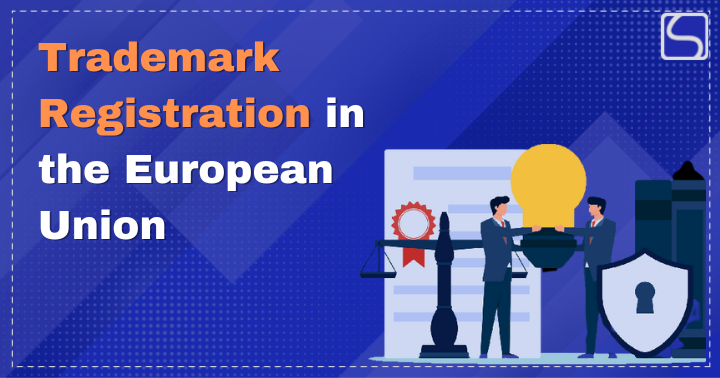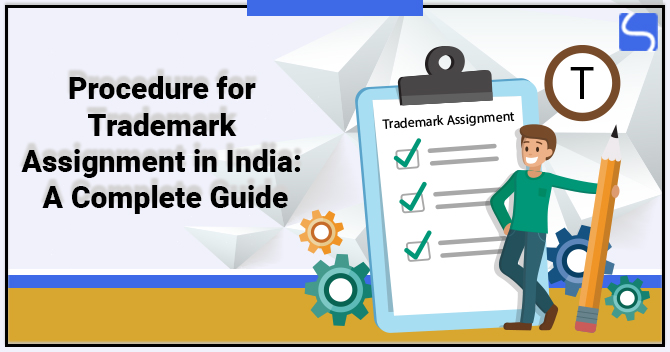Trademark Registration in the European Union – A Complete Analysis

Karan Singh | Updated: Nov 01, 2022 | Category: Trademark
Anyone operating a business in the European Union can register a Trademark with the EUIPO to enjoy protection from Trademark Infringement. To obtain Trademark Registration in the European Union, the most convenient way is to file a European Union Trademark application. It covers all the 27 Member States of the European Union. Simply put, if you register your Trademark under EUIPO, then it is applicable & valid in all the 27 Member States of the EU or European Union. Scroll down to check more information regarding Trademark Registration in the European Union.
Table of Contents
What is EUIPO?
EUIPO or the European Union Intellectual Property Office & formerly OHIM; it is a European Union agency responsible for design & Trademark Registration throughout the EU with a single application. That means, it saves cost & time for companies seeking protection for their brands across multiple European Union countries. It also collaborates with the Intellectual Property Offices in the European Union member States & International Partners to provide a unified IP Registration experience across the globe.
Following are different types of marks one can register under EUIPO:
- Position Mark;
- Hologram Mark;
- Shape Mark containing word elements;
- Pattern Mark;
- Word Mark;
- Figurative Mark;
- Shape Mark;
- Colour (Single) Mark;
- Colour (Combination) Mark;
- Motion Mark;
- Multimedia Mark;
- Figurative Mark content word elements;
- Sound Mark.
Different Options for Trademark Registration in the European Union
A business operating in the European Union has 4 different Trademark Registration options. Based on the business requirements, a company or an individual can choose the one that suits them as per their requirements.
- National: The applicant may require Trademark Registration in one European Union member state where the applicant’s business is currently located or where you want to trade. One can directly file a Trademark Registration application with the appropriate national Intellectual Property Office for the same reason.
- International: This option is registering the Trademark internationally. One can use their regional, national or EU Trademark application to expand the protection globally to any Madrid Protocol signatory country.
- Regional: In this option, the applicant can file the application for Trademark Registration on a regional basis. For example, if one requires Trademark Registration in Belgium, Luxembourg, and the Netherlands. Then, they need to apply to the BOIP (Benelux Office of Intellectual Property), the only regional-level IP Office in the European Union, for Trademark Registration in those 3 Member states.
- European Union: If anyone wants to safeguard the brand across the various European Union member states, they must apply for Trademark Registration in the European Union from EUIPO. Furthermore, the applicant needs to file an application in one language only.
What are the Benefits of Registering a European Union Trademark?
The following are some benefits of registering a European Union Trademark:
- You can enforce your Trademark in a market of around 500 million customers;
- The European Union Trademark gives its owner an exclusive right in all the present & future EU Member States at a reasonable cost;
- A single registration filed online only in one language – is valid in all EU Member States;
- An owner can protect their sign throughout the European Union by filing a Trademark application with the EUIPO/European Union Intellectual Property Office. The European Union Trademark is indeed a unitary title covering all 28 members of the EU.
Filing Requirements in the EU
The official languages of the European Union Intellectual Property Office are French, Italian, Spanish, English, or German. Applications for Trademark Registration in the European Union can be filed in any of the 23 languages of the EU, a 2nd language which is one of the EUIPO’s official languages, must be stated as a possible language for revocation, opposition, or invalidity proceedings. If the application of the Registration was filed not in one of the official languages, then the translation in the selected official language should be provided to the Office.
To get the filing date of an application for Trademark Registration in the European Union should contain:
- Request for Trademark Registration;
- List of the products and/or services;
- Trademark Representation;
- Details of the applicant.
If priority is claimed, a certified copy of the Priority Document should be submitted to the Intellectual Property Office within 3 months from the date of filing the application. If the language of the Priority Documents is not one of the languages of the IP Office, then the applicant shall, if requested by the Intellectual Property Office[1], submit the translation into the language used as the 1st or 2nd language of the filed application within a given period by the IP Office.
Application Procedure for Trademark Registration in the European Union
Following is the step-by-step application procedure for Trademark Registration in the European Union:
Step 1: Filing an Application to EUIPO: First, the applicant needs to file the trademark application to EUIPO; after filing the application, the EUIPO checks if your application for Trademark Registration in the European Union contains the mandatory & basic details required:
- A request for application;
- Correctly identified owner;
- A clear representative of the mark;
- A list of products & services.
Step 2: Search for Previous Rights: In this step, the EUIPO performs a search for earlier rights, prepares a search report & sends the report to the applicant. Owners of earlier registered Trademarks cited in the report are informed through a letter regarding your Trademark application. This is known as Surveillance Letter. The results of both Search Reports & Surveillance Letters are for information only; only upon the owners’ opposition to these earlier rights can cancel the Registration.
Step 3: Examination: During the examination, your Trademark is examined to see whether it is unique or not. An application for Trademark Registration shall be rejected by the EUIPO in whole/in part if it doesn’t meet the examined requirements.
Step 4: Publication: Once the search report is sent to the applicant, then the EUIPO will publish the Trademark application in the Trademark Journal in 23 EU official languages.
Step 5: Opposition: Within a period of 3 months of the publication date, an opposition may be submitted. An opposition notice is generally based on the following 2 reasons:
- The 3rd party has a previous right (or more than one) & believes that yours will, if registered, conflict with it or;
- The 3rd party considers that your Trademark shouldn’t be accepted. You can file an opposition by filing an application form & paying the requisite fee.
One in 5 applications for European Union Trademarks is opposed by the Trademark owners that are already on the market. The EUIPO decides on these disputes after other applicants, opponents & parties have submitted arguments & evidence. The applicant can minimise the risk of opposition by searching for potential conflicts before they apply.
Step 6: Registration: If the application for Trademark Registration in the European Union and the sign to which it relates meets all the requirements, the subject matter of the application will be registered as a Trademark. After Registration, the EUIPO issues a Trademark Registration Certificate. In case your application is rejected, it is still possible to convert (IP Bridge) your European Union Trademark application into national Registrations, provided no conflict exists.
Validity and Renewal of Trademark Registration in the European Union
The validity of Trademark Registration in the European Union is for 10 years from the filing date & can be renewed for successive ten years. The owner of a Trademark may request for the renewal of the term during a 6-month period prior to the expiry date of Trademark Registration. An application for renewal may be filed after the expiry of the legal protection of the Trademark within a 6-month grace period upon payment of the surcharge.
Conclusion
The primary objective of the European Union Intellectual Property Office is cooperation. It aims to aid businesses by strengthening the international IP Framework. The European Union Intellectual Property Office directs the Design & Trademark Rights in the European Union. These rights complement national IPRs and are associated with International IP Systems. Businesses operating in the EU can choose from various different Trademark Registration routes.
Read our Article:What is a Composite Mark? – Meaning and Trademark Registration Process














